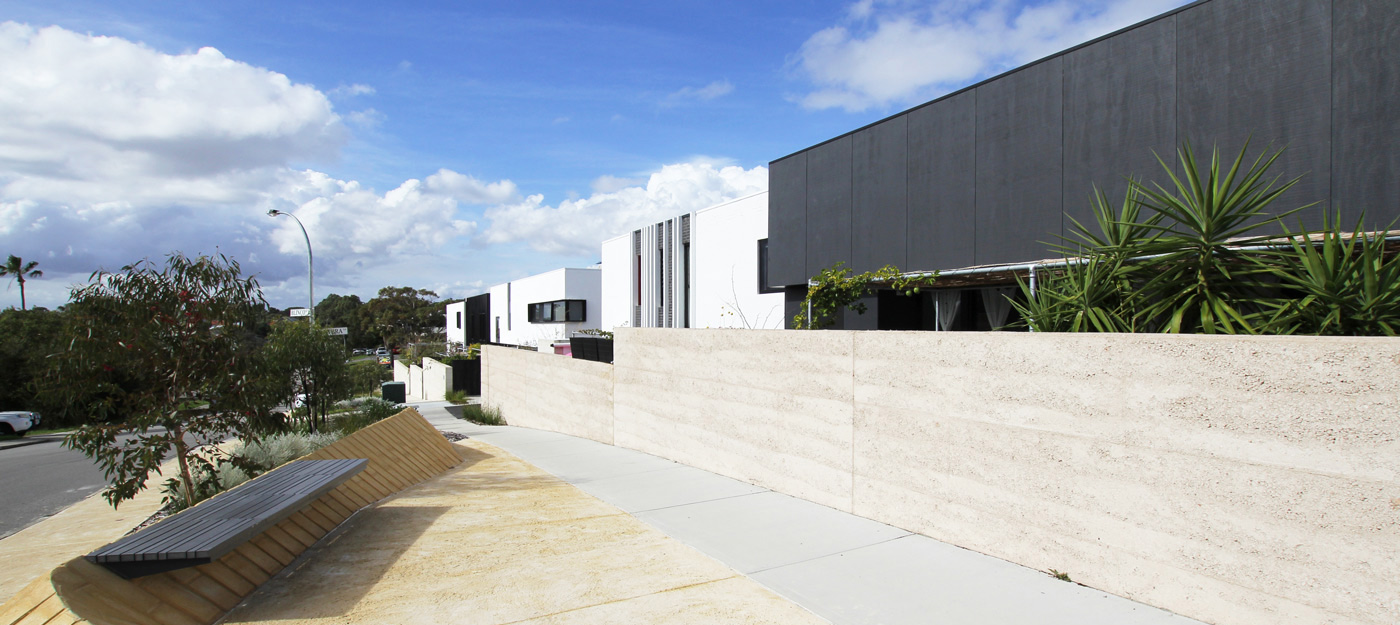The need to increase densities is one of the most important social, environmental and economic issues facing Western Australia. Achieving state wide planning objectives, particularly increasing density however, often leads to criticism of our planning approvals system. Development Assessment Panels (DAPs) and Design Advisory Committees (DACs) are relatively new additions to the approvals system in Western Australia and are the focus of debate within local communities, councils and the private sector.
DAPs were established as part of state wide planning reform to assess large development applications in place of local government. DAPs generally consist of two local councillors possessing local knowledge and three 'technical specialists' from the fields of architecture, urban design, planning, landscape design, engineering or property appointed by and reporting to the Minister for Planning. Some local councils are critical of DAPs and are investigating their ability to withdraw from the DAP system believing it is weighted by 'technical specialists' who do not consider or value local community concerns.
DAPs are an attempt to balance a local viewpoint whilst also acknowledging 'big picture' state wide planning objectives such as urban sprawl within the approvals system. Perth is one of the worst examples of urban sprawl and lowest density cities in the world. Our metropolitan area is continually expanding outwards creating infrastructure and services disparity on its un-sustainable fringes. Almost all acknowledge the negative social, environmental and economic consequences of urban sprawl but few want higher density development in their community, street or let alone as a neighbour.
Many local councils are failing to achieve defined density targets1 reflecting local community concerns, while others are achieving targets by introducing density along major transport corridors and in commercial centres. Even this often causes local community backlash channelled into criticism of DAPs. State wide planning objectives are naturally implemented through the approvals system. Along with policy development, approvals are the critical process controlling outcomes. Assuming local planning schemes are clear and consistent DAPs can only approve proposals complying with local planning schemes, which are prepared by local councils.
As such, are DAPs really the problem or should this energy be focused on the state wide planning objective, increasing density, which often generates the criticism? Can increased densities in inner city areas be achieved whilst integrating into, contributing to as well as protecting neighbour amenity and local communities? As with any complex problem the solution involves achieving a delicate balance. Urban formations are incredibly complex interacting systems. Despite the urgent need to increase densities comparatively little practical research is conducted on this topic locally.
Research focused on successful medium and high density development typologies and models appropriate to Western Australian is critical. We have a prolific amount of state government generated policy reiterating the need for higher densities. We also have many generic design manuals identifying 'best practice' apartment layouts and streetscape activation strategies. Systematic research identifying overall site organisation options for medium as well as high density development relating to common Western Australian block sizes and local contexts is harder to find. There are many successful high density mixed use and multi-residential housing models in Europe as well as some in the Eastern states however are they directly transferable to and appropriate for Western Australia? Integrating these models into local communities by definition needs to be conducted by local councils incorporating their embedded local knowledge.
Achieving higher densities requires a cultural shift through education. Local councils need to initiate greater education within communities to raise awareness regarding the importance of density. Local communities have rightly reacted against the many poor West Australian high density outcomes constructed in the past as well as those being constructed at present. These are predominantly large apartment towers contributing little to surrounding communities. Amenity rich, high density, low rise models restricted to four levels in height are also an option not commonly considered. Shared accommodation, combined live work accommodation, granny flats, ancillary dwellings, rear subdivisions and adaptive re-use projects are also important parts of the solution. As people are exposed to high quality outcomes establishing the conditions for strong communities by balancing contribution to streetscape and protecting neighbour amenity, local resistance will decrease.
Greater understanding of quality high density models is also required at state and federal government level. The recent appointment of a Federal Minister for Cities and the Built Environment was received positively and looked to be a significant positive commitment but turned out to be incredibly short lived. Federal, state and local government need to show strong united leadership in this area as well as the co-dependent issue of our poor public transportation network in Western Australia.
The Premier of Western Australia recently warned local councils to increase densities or be over-ruled. Local councils need to take ownership of density otherwise they will inevitably have outcomes enforced upon them with little local input. They should respond by investing in rigorous master-planning or precinct plans to investigate increasing densities in specific locations. Successful outcomes require detailed local area investigation to understand the opportunities and challenges. Transition interfaces between different use and density zoning, proximity to public transport as well as bike pathways, housing encouraging a high proportion of family owner occupiers rather than investors, integration of soft landscaping, likely future development and impact on local traffic, just to name a few, are issues that need to be carefully considered. The resulting knowledge will in turn be transferred into robust, responsive and responsible local planning schemes.
Many of the more successful outcomes in Western Australia increasing density, whilst also establishing the conditions for strong local communities, have been generated by Landcorp and MRA. Both are government departments, working closely with local councils, local communities and the private sector. WGV in White Gum Valley still under construction and the first stage of Knutsford, both on the outskirts of Fremantle, are innovative medium density developments transforming large brownfield sites. As density increases so too does the challenge. Introducing density into established communities is more complex however lessons can be learnt from WGV and Knutsford. State government through departments such as MRA and Landcorp should have greater involvement in high density, inner city, infill development extending on the successes of these outcomes.
Quality high density models can also be encouraged within the design process and approvals system. Large multi-residential and mixed use developments are commonly designed by architects employed by developers, to achieve real estate agent defined objectives. The benefits of quality outcomes are not always recognised or valued within this system. Maximising commercial returns from standardised predictable products is the typical outcome whilst innovation, contribution to context and local community is often prioritised out. The private sector won't and should not be expected to generate high quality outcomes. Likewise local council planning departments are equipped to assess compliance but not necessarily to encourage quality outcomes.
This is where DACs, which are an important resource and moderator within the approvals system, are of value. They consist of architects, urban designers, planners and landscape professionals appointed by local councils providing independent design advice. The review process can vary between councils however DACs generally review proposals and make recommendations as part of the design process involving property owners, building designers and local council planning departments working collaboratively to improve outcomes. Evaluating massing, general site organisation, orientation, inhabitant amenity, contribution to streetscape and protecting neighbour amenity are all within DACs core assessment criteria, generally based on acknowledged design principles such as the NSW Government State Environmental Planning Policy No.65 (SEPP65).
One criticism of DACs is the additional timeframe required within what can already be a long approvals process. Given the impact large developments have on so many over their lifespan, the importance of taking the additional time to achieve improved outcomes should be acknowledged. It is often poorly considered proposals, applicants not providing comprehensive contextual investigation or applicants who are not open to engaging in the collaborative process who spend the longest timeframe achieving DAC support.
An un-intended but critical outcome of DACs is that some architects are being sought after by developers based on reputations for 'getting projects through DACs quicker'. While this may be a crude commercial objective it's occurring because they are consistently producing proposals balancing commercial returns versus quality design outcomes. West Australian architects have long called for legislation to mandate buildings of a significant size being designed exclusively by experienced architects, now adopted in New South Wales. The shorter timeframes required by skilled architects to gain DAC support encourages the use of these architects. Often increased yields are also achieved making use of 'design excellence' provisions in some local council planning schemes which are an important mechanism encouraging quality outcomes.
In summary, much of the criticism of DAPs results from the implementation of state wide planning objectives, particularly increasing density. This is a battle to control the approvals system between state government implementing policy and local government reacting to pressure from local community groups. Much of the debate is centred on DAPs, however we would be better off focusing our energy on findings ways to increase the quality of medium and high density outcomes.
Stronger state and local government leadership as well as local research investigating high density development models appropriate to Western Australia are both critical. State government through departments such as MRA and Landcorp should have greater involvement in high density infill development building on the successes of recent medium density outcomes. This will lift the quality of the high density product in the market, as well as raise public awareness which will in turn demand private developers generate better outcomes. As local communities are exposed to improved outcomes their resistance will decrease.
Local councils need to take ownership of density by investing in detailed local area master-planning to better understand the possibilities and challenges presented by increasing densities in specific local communities. This can only occur at a local council level incorporating their embedded local knowledge. Processes such as DACs are also valuable in achieving dense outcomes contributing to, not only liveable, but sustainable, engaging and inspirational local communities. High quality outcomes will inevitably have immeasurable long term social, environmental and economic benefits for Western Australia.
May 2016
- Density targets are set by the Government of Western Australia 'Directions 2031 and Beyond' and 'Perth and Peel @3.5 million' policy documents.
- Images - Knutsford Development in Fremantle by space agency architects













